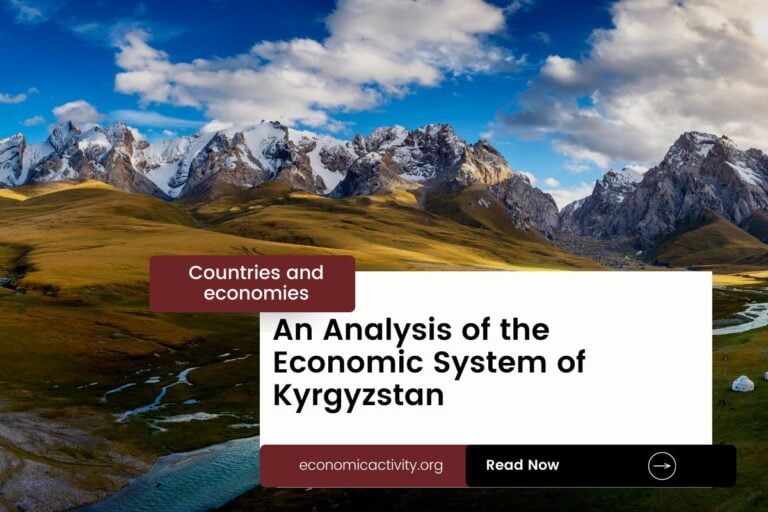China, with a population of 1.4 billion, is the world’s second most populous country, just behind India. It is located in East Asia, covering a total area of 9,562,910 square kilometers, ranking 4th globally, below the United States.
China, the world’s second-largest economy in terms of GDP, had a GDP of $17,963,171,479,205.3 in 2022, ranking behind the United States with a GDP of $25,439,700,000,000. China’s GDP per capita in 2022 was $12,720.22, placing it 67th globally, behind Seychelles with a GDP per capita of $13,250.46.
Despite facing challenges such as trade tensions and demographic shifts, China continues to be a major player in the global economy, with a focus on innovation, technology, and sustainable growth.
What are the economic activities of China?
- Primary activities: 7.9% of GDP.
- Secondary activities: 40.5% of GDP.
- Tertiary activities: 51.6% of GDP.

Primary Sector of China
China’s primary sector, particularly its agricultural activities, thrives due to its diverse climate and abundant natural resources. With 55.46% of the country’s land dedicated to agriculture, China produces a wide range of crops and animal products. The main agricultural products include maize, rice, vegetables, wheat, sugarcane, potatoes, cucumbers/gherkins, tomatoes, watermelons, and pork.
Despite agriculture contributing 7.9% to the GDP, its significance lies in the variety and quantity of products, highlighting the sector’s importance to the country’s economy.
China’s diverse geology provides abundant natural resources, driving its primary sector. Rich in coal, iron ore, petroleum, and natural gas, these resources fuel the economy. Additionally, its reserves of rare earth elements, uranium, and vast hydropower potential support industrial growth. The country’s arable land also plays a crucial role in agriculture, ensuring food security.
China’s oil production ranks 4th globally, with around 3.98 million barrels per day. The country holds 25.1 billion barrels in reserves, accounting for 1.57% of the world’s total.
China’s robust gas production, ranking 4th globally, bolsters its economic activity, diversifying its resource-driven primary sector.
Secondary Sector of China
What is the secondary sector or what are secondary activities?
The secondary sector involves industries that create finished products from raw materials. China is a world leader in industrial output, producing goods like iron, steel, aluminum, machinery, textiles, petroleum products, chemicals, consumer goods, food, transportation equipment, and more.
Manufactures play a crucial role in China’s total exports, accounting for an impressive 91.88% in 2023. This highlights the significant contribution of the manufacturing sector to the country’s economy and global trade.
Tertiary sector of China
What is the tertiary sector or what are tertiary activities?
The tertiary sector in China encompasses a wide range of services where individuals provide knowledge and time to enhance productivity and meet various needs. This sector involves intangible goods such as advice, expertise, and attention, catering to both consumer and business-to-business services. Key tertiary activities in China include restaurants, healthcare and medical care, education and training, banking and finance, communication and information exchange, media production and distribution, and tourism and hospitality.
Highlighting these, China’s tourism industry significantly contributes to its economy, with 162,538,000 annual arrivals. Tourism accounts for 0.1151 of its population. Popular destinations include the Great Wall of China and the Forbidden City in Beijing, showcasing the country’s rich history and culture.
Another example of tertiary economic activity is the mobile cellular economic sector, boasting 1.781 billion subscriptions, or 125 per 100 inhabitants. This extensive network fosters technological growth, enhancing connectivity and innovation.
Military Activities and Economic Sectors of China
The military is a good example of many economic activities working together. In the primary sector, resources are extracted for military use, like metals for weapons. The secondary sector makes military equipment, such as tanks and planes. The tertiary sector includes services provided by the military, like training and support. The quaternary sector focuses on research and development, while the quinary sector involves high-level decision-making and strategy.
In 2023, China spent about 296,438.6 million US dollars on its military. This amount is 1.59% of the country’s GDP. China has an active military force of 2,035,000 personnel, which means there are 2.1 active military members for every 1,000 people in the country.
Biggest company in China
Which is the biggest company in China? Tencent Holdings is the largest, with a market value of $414.28 billion. Founded in 1998, it operates in the IT Software and Services industry, part of the tertiary economic sector, focusing on technology and digital services.
International Trade of China
Import Activities of China

China’s import activities are of high importance, with total imports in 2023 reaching $25.56 trillion, accounting for 17.47% of its GDP.
China’s import activities include crude petroleum, integrated circuits, iron ore, natural gas, and gold. Its top import partners are the US, South Korea, Japan, Australia, and China itself.
Exports Activities of China

China’s total exports in 2023 amounted to a staggering $33.797 trillion, with exports contributing to 20.68% of its GDP. This signifies a medium level of importance, highlighting the significant role export activities play in China’s economy.
China’s export activities are diverse, with top partners being the US, Hong Kong, Japan, Germany, and South Korea. Key export commodities include broadcasting equipment, integrated circuits, computers, garments, and machine parts.
China economy challenges in 2024
China, one of the world’s top two economies, faces challenges in 2024. Despite sustained growth from exports and manufacturing, recovery efforts are hindered by poverty imbalances and institutional issues. State-sponsored economic controls may further complicate the situation.




Leave a Reply